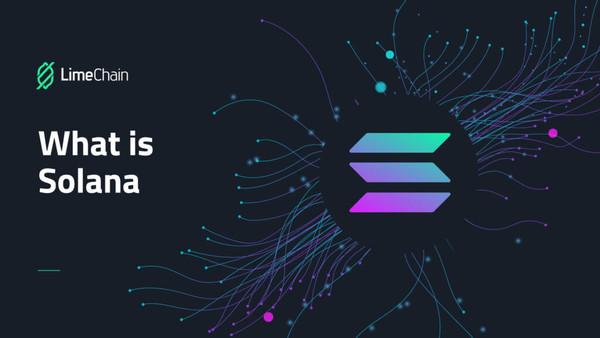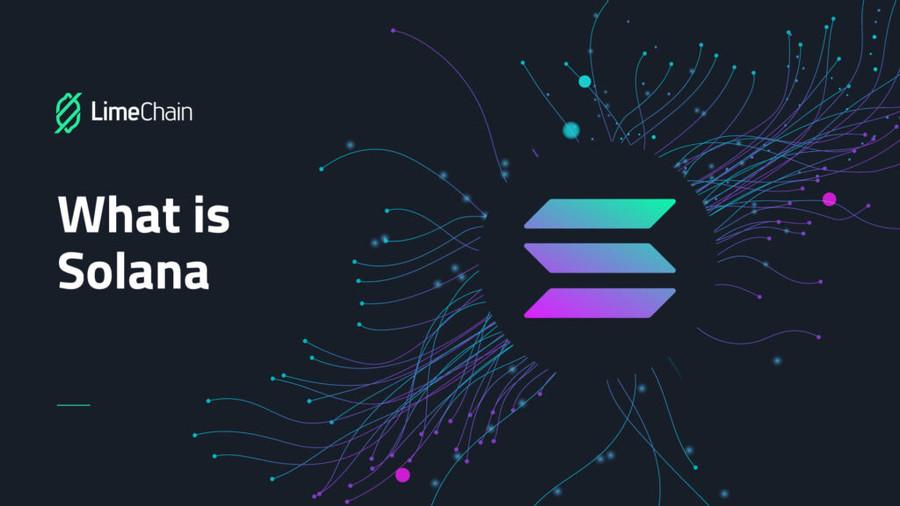What is Solana?
Curated from: limechain.tech
Ideas, facts & insights covering these topics:
7 ideas
·396 reads
3
Explore the World's Best Ideas
Join today and uncover 100+ curated journeys from 50+ topics. Unlock access to our mobile app with extensive features.
Even though Solana is a relative newcomer to the blockchain space, the protocol has already established itself as one of the most prominent blockchain projects out there. The rising popularity of NFT marketplaces running on Solana has been among the recent success stories in the blockchain space, while the protocol’s native token SOL has been among the best-performing cryptocurrencies this year and is currently the fifth most valuable token on the market.
9
162 reads
What is Solana’s Proof of History?
Yakovenko and the Solana team found a way to utilize that method in a blockchain-based system by using a similar mechanism to the nLocktime feature that can be found in the original blockchain protocol – Bitcoin. NLocktime allows for postdate transactions using block height instead of timestamps. As it turns out, this is a cryptographically-secure way to show that time has passed.
The same principle is used to power Solana’s key innovation – the novel Proof of History algorithm. However, the Solana team has refined the approach by using a much more granular verifiable delay function, a SHA 256 hash chain, which is used to checkpoint the Solana ledger and coordinate consensus. Essentially, this method assigns a cryptographic clock to every transaction.
According to Solana, thanks to this method, the protocol could theoretically reach 710,000 transactions per second, or the theoretical limit of a 1GB centralized network.
10
90 reads
What is Solana’s Proof of Stake?
In addition to Proof of History, Solana utilizes a Proof of Stake algorithm which lets users stake tokens to help secure the Solana network. The protocol uses a delegated stake model, which sees users delegating their tokens to established network validators. This is a shared-risk, shared-reward model that incentivizes token holders to have their tokens delegated for long periods of time.
At the same time, the goal of a validator is to get more people to delegate tokens because the delegated stake size determines how often a validator is chosen to write new transactions to the ledger. In addition, similarly to other PoS protocols, Solana employs a slashing mechanism – which removes and destroys tokens from a stake – to penalize malicious behavior, which creates a financial incentive for validators to perform their duties diligently.
Validators also charge delegators with a commission fee, which is calculated as a percentage of rewards earned. This fee is meant to cover the costs validators incur when running and maintaining their systems. And since validators always look to attract more deligators, this encourages them to compete on fees – naturally, validators who offer lower fees for their services are more attractive.
9
29 reads
Architecture
At the heart of the protocol’s architecture lies the Solana cluster – a set of validators working together to serve client transactions and maintain a ledger. At any given moment, a cluster has a leader, with the role being in rotation among all validators participating in that cluster. The cluster leader is responsible for bundling and timestamping incoming client transactions (which are first received by validators and then relayed to the leader) by utilizing the PoH algorithm. Then the leader pushes them onto the cluster’s ‘data plane’. From there they are validated by the validators and added to the ledger.
9
34 reads
What is Solana’s Programmability?
For starters, smart contracts in Solana are called programs and are stateless. This means that, unlike Ethereum smart contracts which contain both the program logic and state, Solana programs contain only the logic and are deployed on-chain in a ‘read-only’ mode. Once deployed, the programs can be accessed by external accounts, which contain the data related to program interaction (unlike Ethereum accounts, accounts on Solana can store data). This separation of logic and state informs the specific production flow of Solana dApps.
Every Solana dApp consists of two parts: a blockchain-based program (or set of programs) and a web application through which users can interact with the blockchain code. The blockchain program is deployed directly to a Solana cluster and users can then send instructions to the program via transactions. A single transaction can contain one or several instructions, which are then executed sequentially and atomically. If all instructions are valid, the program is successfully executed. However, if even a single instruction is invalid, the changes made by the transaction are discarded.
9
25 reads
Every Solana dApp consists of two parts: a blockchain-based program (or set of programs) and a web application through which users can interact with the blockchain code. The blockchain program is deployed directly to a Solana cluster and users can then send instructions to the program via transactions. A single transaction can contain one or several instructions, which are then executed sequentially and atomically. If all instructions are valid, the program is successfully executed. However, if even a single instruction is invalid, the changes made by the transaction are discarded.
9
25 reads
What are Solana’s Ups and downs?
Solana’s impressive performance in terms of transaction throughput and cost effectiveness has allowed the protocol to emerge as one of the most prominent players in the DLT space. The recent boom of Solana-based NFTs and the rise of NFT marketplaces like Solanart has shown that the platform is capable of competing in an area where Ethereum is widely viewed as an undisputed leader. Meanwhile, the spectacular rise of the SOL token this year suggests that there are many who believe that Solana has a bright future.
9
31 reads
IDEAS CURATED BY
Decebal Dobrica's ideas are part of this journey:
Learn more about startup with this collection
The differences between Web 2.0 and Web 3.0
The future of the internet
Understanding the potential of Web 3.0
Related collections
Similar ideas
6 ideas
How Does Blockchain Security Work, Anyway?
hackernoon.com
7 ideas
Ethereum upgrades: A beginner’s guide to ETH 2.0
cointelegraph.com
8 ideas
Read & Learn
20x Faster
without
deepstash
with
deepstash
with
deepstash
Personalized microlearning
—
100+ Learning Journeys
—
Access to 200,000+ ideas
—
Access to the mobile app
—
Unlimited idea saving
—
—
Unlimited history
—
—
Unlimited listening to ideas
—
—
Downloading & offline access
—
—
Supercharge your mind with one idea per day
Enter your email and spend 1 minute every day to learn something new.
I agree to receive email updates

